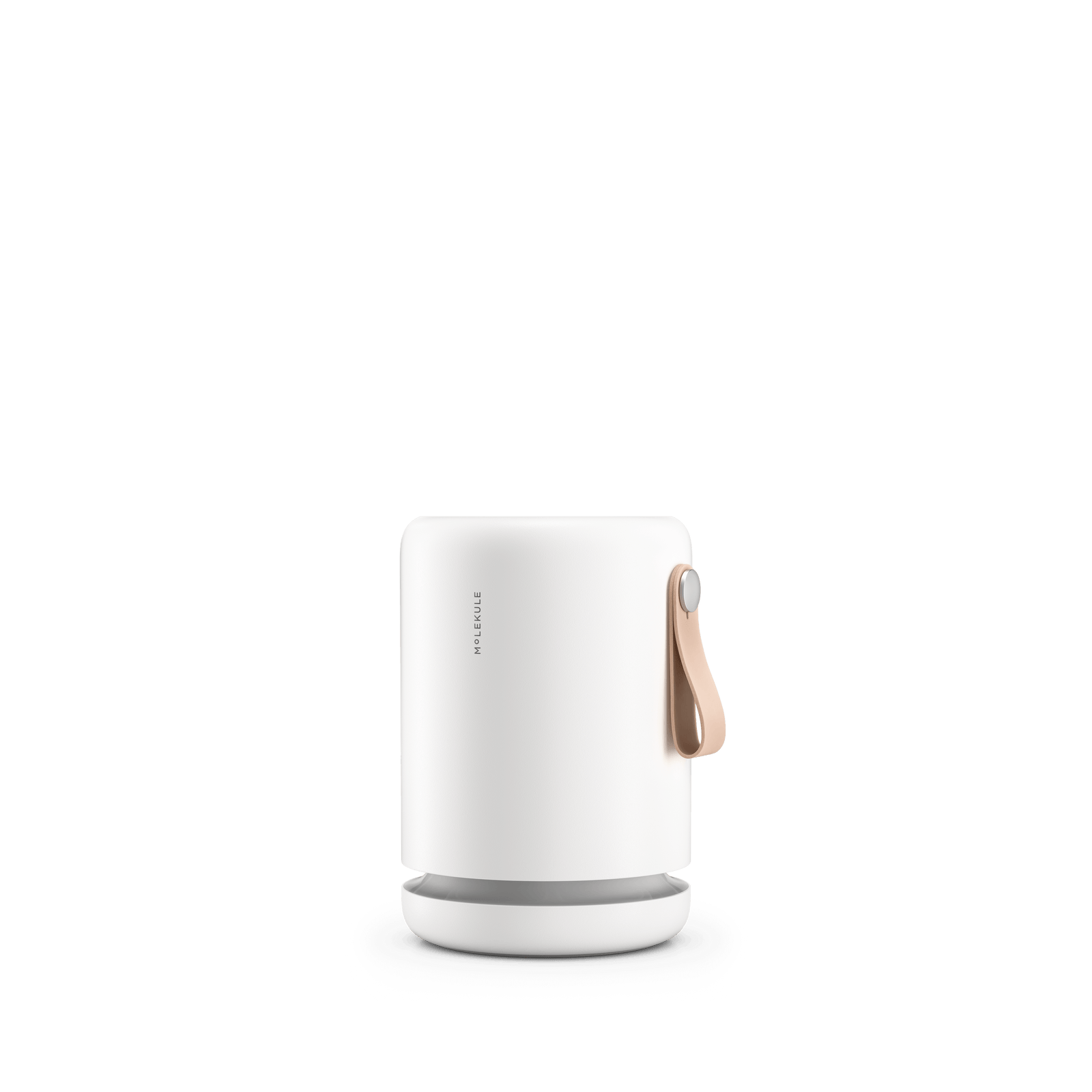The average American spends almost 300 hours driving every year, according to the American Automobile Association. If you have a lengthy commute, you might be spending even more time in your car, which means you should also be concerned about the air quality in your car. Today’s car air purifier options deal with pollution with varying degrees of success.
We will break down the types of pollution you will encounter on the road, how current car air purifiers attempt to deal with these pollutants and whether or not these devices actually help.
Types of pollution that enter your car
Pollutants in your car have two sources: pollution from the outside that enters the car, and pollutants that are created inside the car itself. Keeping the air in the cabin of your vehicle clean presents several challenges, including different pollutant sources and higher pollutant levels than you typically find in your home, as well as limited ways to filter out pollutants. Plus, a lot of the usual advice for maintaining high indoor air quality is turned upside down by the unique conditions inside a car.
Traffic pollution
Outside traffic pollution can take the form of gases or particles. Harmful gaseous pollutants include smog and other airborne chemicals such as benzene, toluene and the xylenes (Leung & Harrison, 1999), which are part of the family known as volatile organic compounds, or VOCs. Ozone, carbon monoxide and nitrous oxide pollution are also found on busy roadways. Particles of road dust from tires, brakes and the roadside can be as small as 0.05 microns (Zhu et al., 2007). Fine particles like these (generally referred to as PM2.5) are some of the biggest contributors to traffic pollution. In contrast, you may also encounter large outdoor particles like pollen while on the road.
Usually, one of the best ways to improve indoor air quality in any environment is to open the windows and let the outside air in. This is because pollutants tend to accumulate in enclosed spaces, and outside air is almost always cleaner than indoor air. However, this advice does not apply to cars because highway traffic generates so much pollution that opening your car windows actually makes the indoor air quality in the cabin worse. Pollutants are carried into the car and trapped inside the cabin.
Even having the windows closed with the vent turned on increases pollutants levels as long as it is set to bring in outside air. Therefore, the best way to reduce exposure to outdoor pollutants is to keep the windows closed and run the vent with it set to recirculate (Hudda et al., 2011). Dense, fast-moving traffic creates the highest concentrations of pollutants, so definitely close those windows during a busy commute.
Pollution inside your car
The in-car environment is distinctly challenging because when you are driving you are typically right in the middle of a major source of outdoor air pollution: a road or highway. Moreover, your car itself generates pollutants. Ultrafine particulate pollutants (UFPs) created by the wear of your car’s tires or brakes can end up inside the vehicle cabin, either through open windows or through the vehicle’s ventilation system. The materials inside the cabin also emit volatile organic compounds (VOCs). The carpet, seats and plastic materials in the dashboard and trim give off chemicals such as benzene, toluene, xylene, ethylbenzene, styrene, formaldehyde, acetaldehyde, acetone and acrolein (Xu et al., 2016). The distinct “new car smell” is also a problem because new cars produce more VOCs than older cars, and leather upholstery gives off more VOCs than synthetic upholstery.
However, a car at rest, even with the engine off, also emits some VOCs because of evaporation and seepage of chemicals such as gasoline, transmission fluid, radiator fluid or hydraulic fluid. Older cars are worse in this regard, due to corrosion, worn seals and other wear and tear.
Keeping the windows closed could allow the VOCs generated by your car’s upholstery and carpet to build up. So there is no perfect solution, unless you happen to be driving on a quiet road with no other traffic, in which case you might open the windows periodically to let VOCs out.
Pollution created by vehicle occupants
There is a third type of in-car air pollution: the kind you create yourself, which includes tobacco or weed smoke, pet dander, smells from food or garbage or mold from wet upholstery. The best way to deal with these pollutants is to remove the source, so clean your car thoroughly, do not smoke in the car if possible and let it air out on a regular basis.
Types of car air purifiers
There are two primary types of air purifiers for use in the car: passive and active. Passive air purification simply refers to the filtration system that is built into your car’s vent and HVAC system. An active air purifier is one that you plug in and activate in hopes of removing additional pollutants from the air.
Built-in air filters
Fortunately, your car’s built-in air filters already do an excellent job of removing particulate pollutants from the air. One study found that running the ventilation fan in recirculation mode removed 85 percent of particulate pollutants from the vehicle cabin (Zhu et al., 2007). Be aware that cabin air filters must be changed regularly because they fill up with the debris they collect and can even end up emitting mold spores or other pollutants if the build-up gets too severe. Check your car’s owner manual for instructions on how to change the filters. Some high-end cars might even have two.
Cabin air filtration could help with the fine particle pollution you will encounter on the road; however, keep in mind that standard cabin air filters may not be able to take care of the tiniest particles. A more efficient filter, the HEPA filter discussed below, may be called for in this case.
HEPA and/or carbon cabin air filters
It is possible to replace the cabin air filters with a HEPA filter, which is designed to remove 99.97 percent of all particles down to 0.3 microns in size, which will improve the air quality inside your car. But even a HEPA filter is not designed to remove VOCs or odors from your car.
Some standard filters are impregnated with carbon, which can remove some VOCs and odors, and some are impregnated with baking powder, which helps tackle odor problems. However, the cabin filter is primarily designed to remove particulate pollutants, so the small amount of added carbon is probably not sufficient to remove a significant amount of the VOCs in a car.
Plug-in filters
Plug-in filters for your car come in two types: ionizers and ozone generators. Ionizers emit a stream of charged particles (ions) that cause particles to clump together and settle out of the air. They might be combined with a mechanical filter (rarely, an actual HEPA filter) to remove more particles. But their air flow rates are generally too low to be very effective. Worse, ionization produces ozone as a side effect. Ozone is a lung irritant and can be toxic at high concentrations. In the enclosed space of a car cabin, the ozone could build to dangerous levels very quickly. As a result, we do not recommend using ionizers in your car.
Moreover, ozone generators simply emit ozone, which could theoretically neutralize some VOCs and odors in the air. However, they are even worse than ionizers since they are intentionally creating ozone in the enclosed space of your car.
What is the best in-car air purifier?

Surprisingly, your cabin air filter is probably your best defense in lieu of buying a product that is advertised to purify the air but may not work very well. Properly maintaining the cabin filter in your car is the best way to keep the air quality in your car as high as possible. Change the filter regularly, especially if you live in a humid climate or if the inside of your car is exposed to a lot of pollution, especially if you often smoke in your car. You should also upgrade to a HEPA filter or a filter with carbon for maximum protection from pollution in your car.
We do not recommend using an ionizer or ozone generator, because the ozone concentrations they produce could be harmful. If you are worried about odors in your car, you could try a carbon filter of some kind. However, the best way to deal with odors in your car is to simply remove the source of the odor—clean up spills, dry out anything that gets wet, remove garbage and try to limit smoking in the car.












